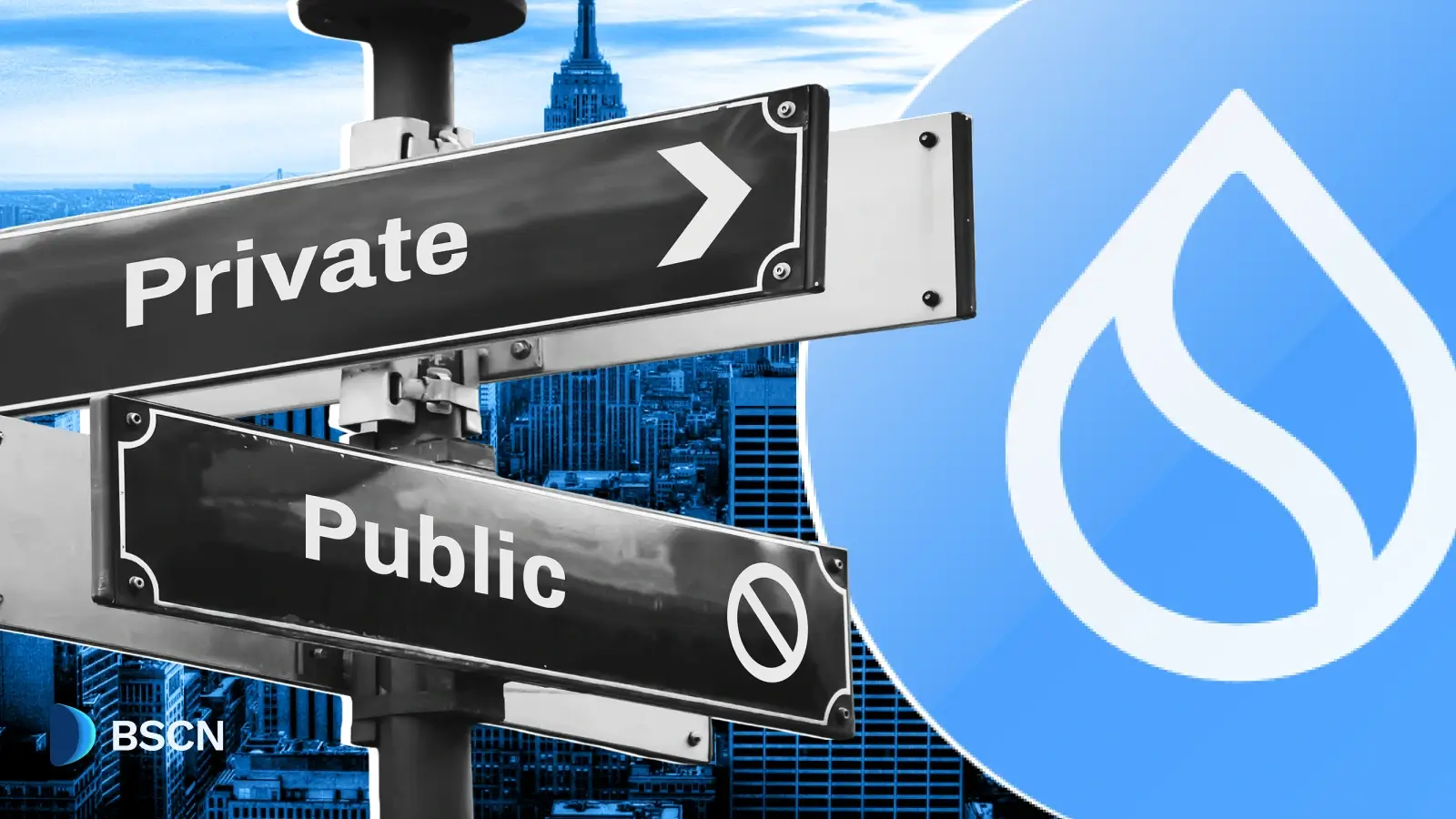Research
(Advertisement)
Sign Protocol Whitepaper Unveils Sovereign Blockchain Future for Global Nations: What we Know

The Sign Protocol whitepaper details frameworks for sovereign blockchain use, covering digital assets, CBDCs, and identity management.
Miracle Nwokwu
September 24, 2025
(Advertisement)
Table of Contents
The release of a whitepaper often marks a pivotal moment for blockchain projects, and Sign Protocol's latest document is no exception. Titled "Sovereign Infrastructure for Global Nations," it outlines a framework that could allow countries to integrate blockchain technology while retaining control over their digital systems.
Released on September 23, 2025, by the Sign Foundation, the paper proposes tools for managing digital assets, identities, and currencies in ways that align with governmental priorities. As nations grapple with digital transformation, this document provides a blueprint that merits closer examination, especially given the project's track record in attestation and token distribution.
Sign Protocol, developed by the team behind EthSign, has positioned itself as a player in the blockchain space since its early days. Originally focused on document signing and verification, it has expanded into a broader ecosystem that includes on-chain attestations and asset management. The protocol enables users to create verifiable claims across multiple blockchains, drawing on technologies like zero-knowledge cryptography and digital signatures to ensure data integrity. This evolution reflects a deliberate shift toward scalability, with integrations across chains such as Solana, Aptos, and TON, making it adaptable for diverse applications.
Tracing the Project's Roots and Growth
Sign Protocol's journey began with EthSign, a platform for blockchain-based agreements, which laid the groundwork for more ambitious goals. By 2021, the project had secured initial seed funding of $650,000, followed by additional rounds that brought in notable backers. In February 2023, it raised an undisclosed amount in a pre-seed round, and by January 2025, a significant $16 million was secured in a Series A, contributing to a total of approximately $28.65 million raised to date. Key investors include Sequoia Capital, Circle, and Binance Labs, whose involvement underscores confidence in the team's vision. These funds have supported development, including the launch of TokenTable for token distribution and Signpass for credential verification.
Milestones have come steadily. In 2024, the project generated $15 million in revenue, largely from powering distribution for centralized exchanges, launchpads, and mini-apps reaching over 40 million users. The native SIGN token launched in April 2025, with its token generation event and listings on platforms like Binance, Bitget, and Gate.io marking a key achievement. By mid-2025, Sign had integrated with national-level initiatives, including partnerships aimed at digital infrastructure. Recent activities include collaborations with entities like CXC10 for ecosystem growth and appearances at events such as Korea Blockchain Week, where the whitepaper was announced live. The project's X account, @ethsign, has shared updates on app features, like anti-farming mechanisms in its Orange Dynasty community platform, which now boasts over 400,000 members, with 100,000 active and verified users. These steps demonstrate a focus on community building alongside technical progress.
Breaking Down the Whitepaper's Core Proposals
At its heart, the whitepaper introduces the SIGN Stack, a three-layer system designed to help nations build sovereign blockchain setups. The abstract acknowledges blockchain's potential for governance and finance but points out barriers like privacy concerns and loss of control, which the framework seeks to address through customizable tools.
The first layer, Sovereign Blockchain Infrastructure, offers a dual approach: a public Layer 2 chain for transparency and global access, built on networks like BNB Chain, and a private Hyperledger Fabric-based system for central bank digital currencies (CBDCs). The public option allows for customizable parameters, such as transaction fees and validator controls, with throughput up to 4,000 transactions per second and inheritance of Layer 1 security. Use cases include issuing national stablecoins, tokenizing assets, and running payment systems. The private path emphasizes permissioned networks with Raft consensus, supporting 3,000 to 20,000 TPS, and features channels for wholesale and retail CBDCs, ensuring confidentiality via private data collections and zero-knowledge proofs. A bridging infrastructure connects these, enabling seamless operations between domestic and cross-border flows.
Moving to the second layer, the Onchain Attestation System—essentially the Sign Protocol itself—facilitates verifiable records of off-chain data, like identities and certificates. It integrates cross-chain identities with privacy preservation, supporting applications from digital credentials to regulatory records, voting, and e-visa issuance. Attestations act as a bridge, turning traditional data into blockchain-compatible formats that can underpin services like financial tools and governance models.
The third layer, the Digital Asset Engine known as TokenTable, handles programmable disbursements at scale. It supports stablecoins and CBDCs, with identity-linked targeting for efficient distribution of benefits, such as universal basic income or welfare subsidies. The paper notes global social protection spending exceeds $10 trillion annually, yet gaps persist for billions; this engine aims to make distributions transparent and auditable, potentially scaling pilots to national levels.
Implementation strategies include decision frameworks for choosing public or private paths and phased deployments, starting with pilots and expanding to full integration. Technical specs, like EVM-based runtimes and ISO-20022 compliance, provide actionable details for developers and policymakers.
Market Reaction and Token Dynamics
The whitepaper's release coincided with notable market activity for the SIGN token. Following the announcement, the token surged over 39% in the last 24 hours, reaching as high as $0.135 on Binance on September 23. As of writing, SIGN trades at $0.11, with a market cap of approximately $143 million. The total supply stands at 10 billion, with 1.35 billion circulating. This uptick followed a shoutout from Binance founder CZ, who mentioned assisting with introductions in several nations, highlighting the project's real-world outreach.
I might have helped a tiny bit with this. Of course, only talking, no coding. 😄 A few intros here and there, in a few nations. 🤔
— CZ 🔶 BNB (@cz_binance) September 23, 2025
Sign is a portfolio company of YZiLabs (minority investor). https://t.co/M61Eo7V1Ek
Listings on exchanges such as Hyperliquid and Bithumb further bolstered accessibility, with promotional events like airdrops tied to deposits.
Broader Implications for Nations and Blockchain
What stands out in the whitepaper is its emphasis on sovereignty—governments retain operational authority, from emergency controls to compliance enforcement, while tapping into blockchain's efficiency. For countries exploring CBDCs or digital registries, this could mean modernizing systems without ceding power. The protocol's omni-chain nature, supporting attestations across ecosystems, adds flexibility, potentially fostering interoperability in a fragmented space.
Challenges remain, such as regulatory alignment and adoption hurdles, but the framework's dual paths offer choices based on privacy needs. With backers like Sequoia and Binance Labs providing resources, Sign Protocol appears equipped to pursue these goals. Future phases might involve more national partnerships, as hinted in updates, building on current integrations.
In summary, the whitepaper presents a thoughtful approach to blockchain for nations, blending technical depth with practical applications. As digital economies evolve, projects like this could play a role in shaping how countries engage with the technology, offering tools that prioritize control and utility.
Sources:
- Sign Protocol official website: https://sign.global/
- Sign Funding Insights (Cryptorank): https://cryptorank.io/ico/ethsign
- Sign Protocol Documentation: https://docs.sign.global/
- Sovereign Infrastructure for Global Nations (Sign Whitepaper): https://sign.global/whitepaper.pdf
Read Next...
Frequently Asked Questions
What is the Sign Protocol whitepaper about?
The Sign Protocol whitepaper, titled "Sovereign Infrastructure for Global Nations," outlines a framework for countries to integrate blockchain technology while maintaining control over digital assets, CBDCs, and identity management.
What are the key layers of the SIGN Stack?
The SIGN Stack consists of three layers: Sovereign Blockchain Infrastructure (public and private options for transparency and CBDCs), Onchain Attestation System (for verifiable identities and records), and Digital Asset Engine (TokenTable for programmable disbursements).
Who are the major investors in Sign Protocol?
Key investors in Sign Protocol include Sequoia Capital, Circle, and Binance Labs, with total funding of approximately $28.65 million.
Why is the Sign Protocol significant for governments?
Sign Protocol provides a sovereign-friendly blockchain framework, allowing governments to modernize digital infrastructure while maintaining control. Its dual public-private model supports both transparency and privacy, making it suitable for CBDCs, national registries, welfare systems, and cross-border digital operations.
Disclaimer
Disclaimer: The views expressed in this article do not necessarily represent the views of BSCN. The information provided in this article is for educational and entertainment purposes only and should not be construed as investment advice, or advice of any kind. BSCN assumes no responsibility for any investment decisions made based on the information provided in this article. If you believe that the article should be amended, please reach out to the BSCN team by emailing [email protected].
Author
 Miracle Nwokwu
Miracle NwokwuMiracle holds undergraduate degrees in French and Marketing Analytics and has been researching cryptocurrency and blockchain technology since 2016. He specializes in technical analysis and on-chain analytics, and has taught formal technical analysis courses. His written work has been featured across multiple crypto publications including The Capital, CryptoTVPlus, and Bitville, in addition to BSCN.
(Advertisement)
Latest News
(Advertisement)
Crypto Project & Token Reviews
Project & Token Reviews
Comprehensive reviews of crypto's most interesting projects and assets
Learn about the hottest projects & tokens














